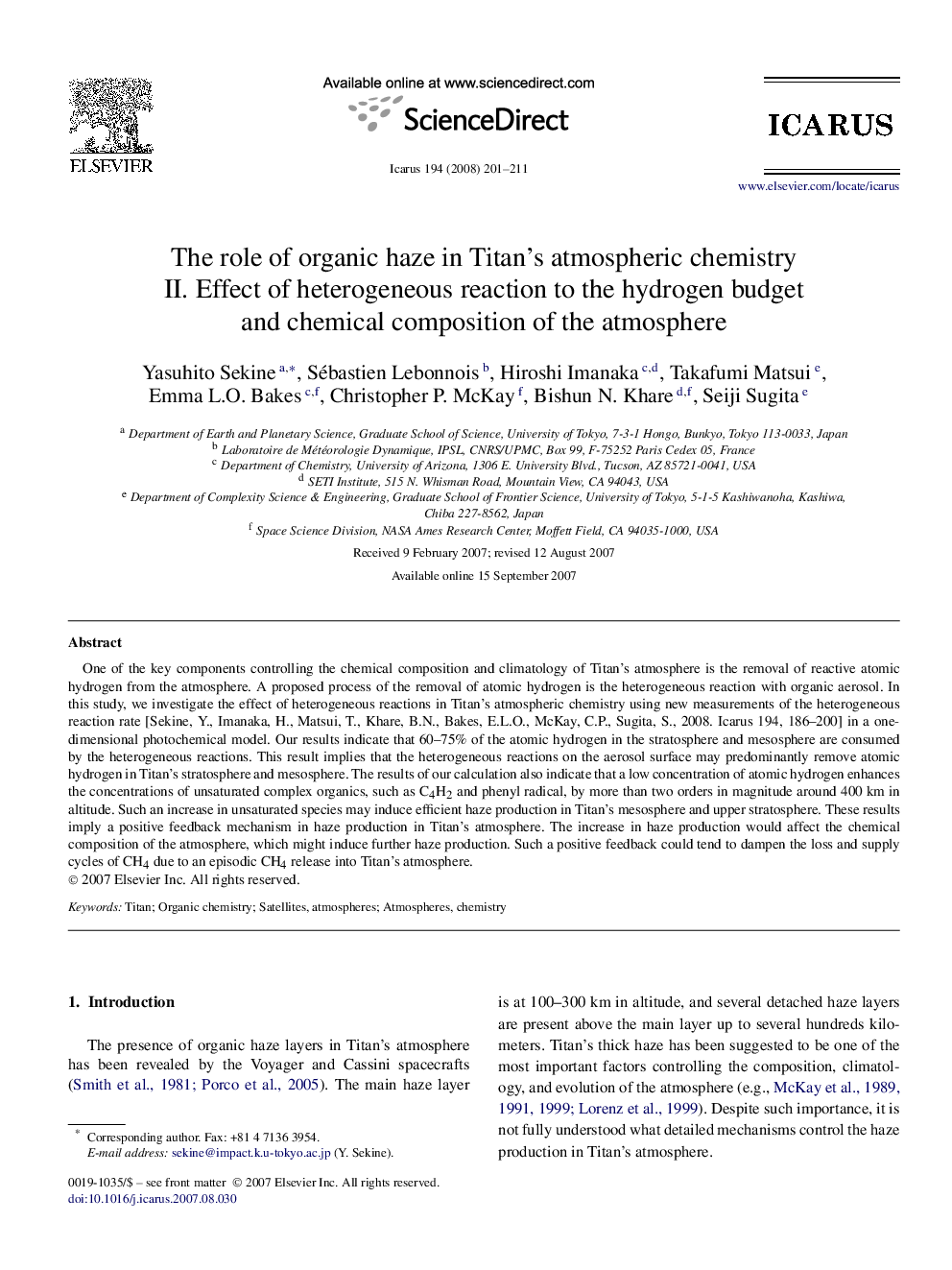| Article ID | Journal | Published Year | Pages | File Type |
|---|---|---|---|---|
| 1774934 | Icarus | 2008 | 11 Pages |
One of the key components controlling the chemical composition and climatology of Titan's atmosphere is the removal of reactive atomic hydrogen from the atmosphere. A proposed process of the removal of atomic hydrogen is the heterogeneous reaction with organic aerosol. In this study, we investigate the effect of heterogeneous reactions in Titan's atmospheric chemistry using new measurements of the heterogeneous reaction rate [Sekine, Y., Imanaka, H., Matsui, T., Khare, B.N., Bakes, E.L.O., McKay, C.P., Sugita, S., 2008. Icarus 194, 186–200] in a one-dimensional photochemical model. Our results indicate that 60–75% of the atomic hydrogen in the stratosphere and mesosphere are consumed by the heterogeneous reactions. This result implies that the heterogeneous reactions on the aerosol surface may predominantly remove atomic hydrogen in Titan's stratosphere and mesosphere. The results of our calculation also indicate that a low concentration of atomic hydrogen enhances the concentrations of unsaturated complex organics, such as C4H2 and phenyl radical, by more than two orders in magnitude around 400 km in altitude. Such an increase in unsaturated species may induce efficient haze production in Titan's mesosphere and upper stratosphere. These results imply a positive feedback mechanism in haze production in Titan's atmosphere. The increase in haze production would affect the chemical composition of the atmosphere, which might induce further haze production. Such a positive feedback could tend to dampen the loss and supply cycles of CH4 due to an episodic CH4 release into Titan's atmosphere.
